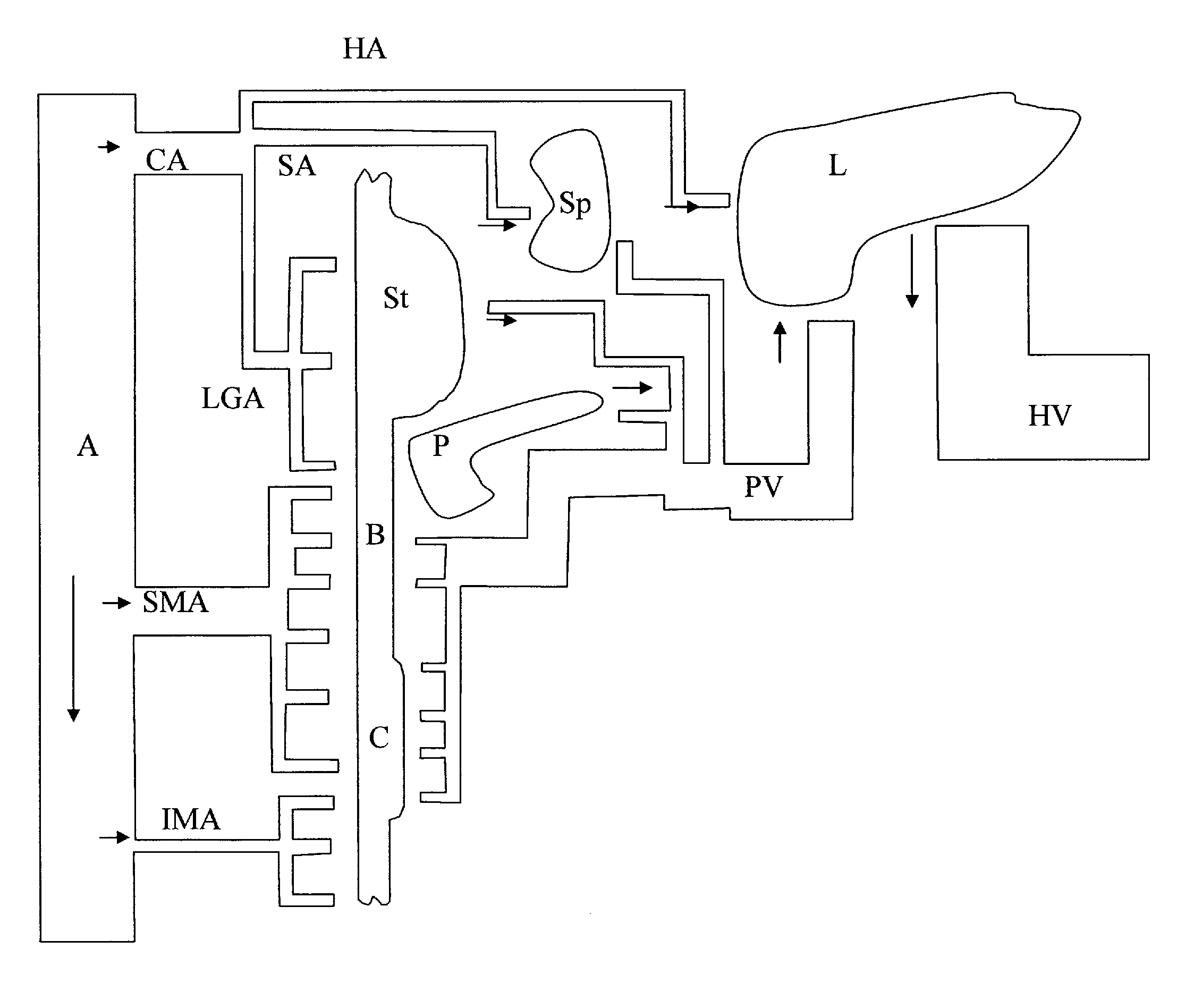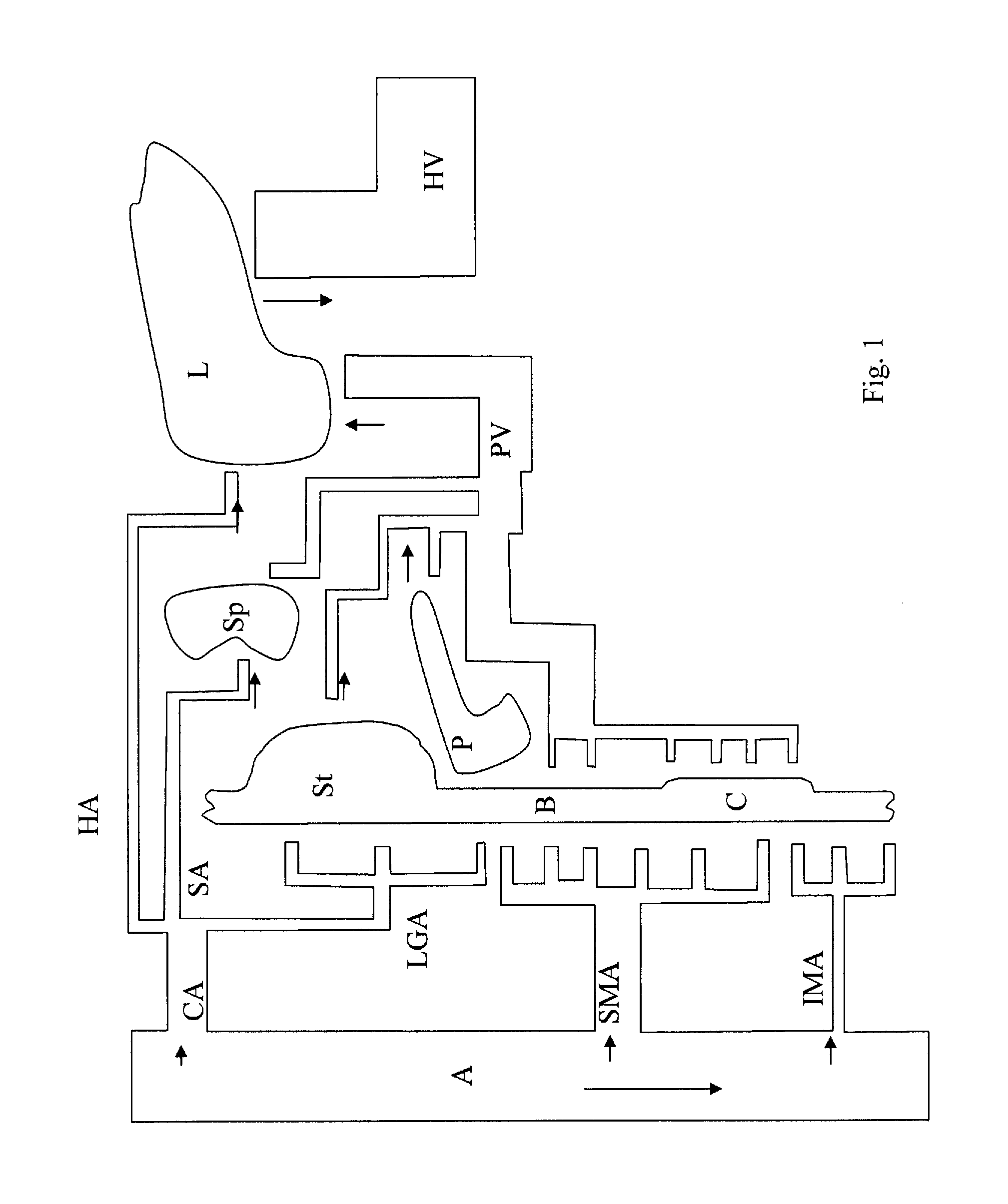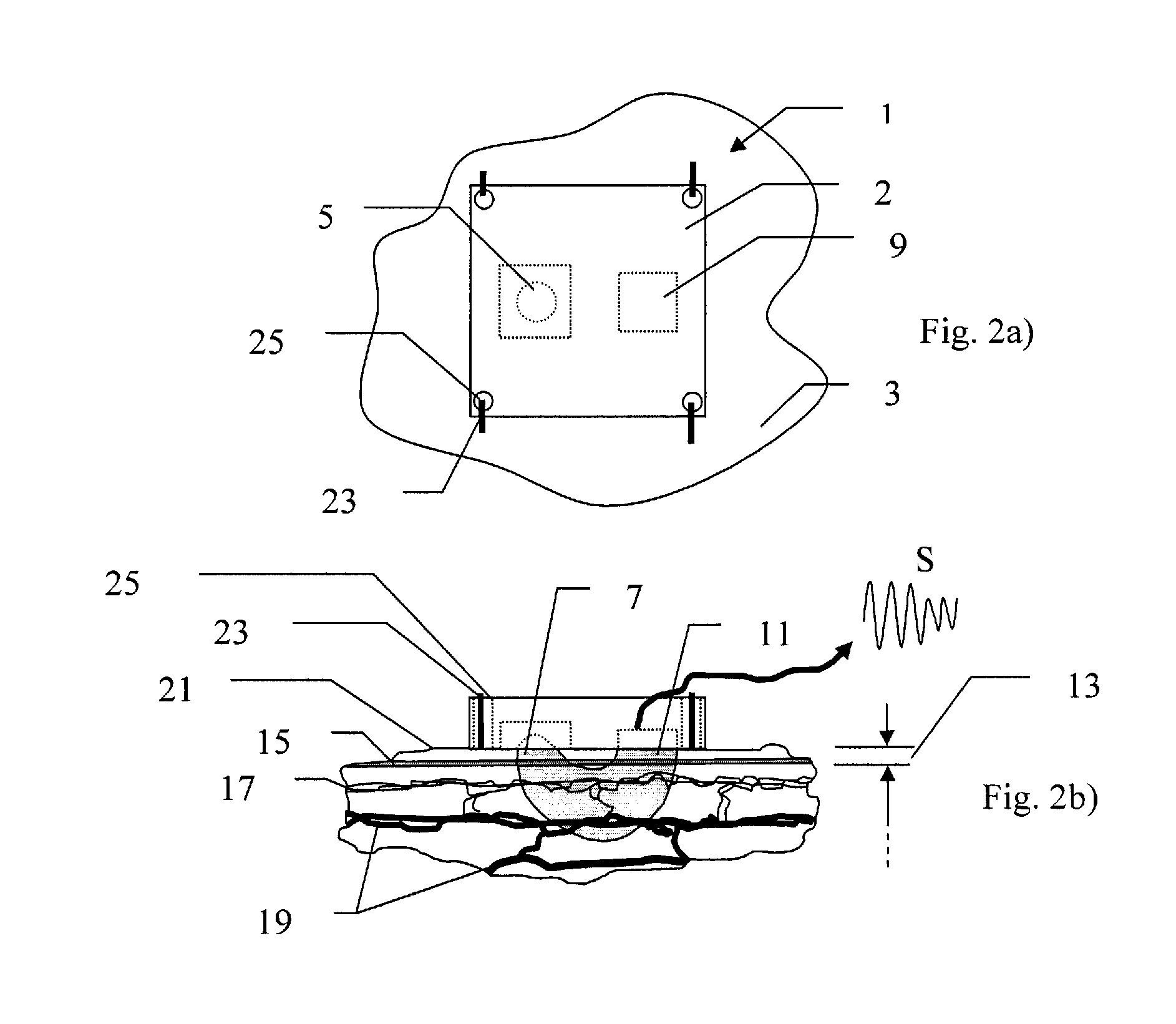Method and device to detect eating, to control artificial gastric stimulation
a gastric stimulation and eating technology, applied in the field of eating detection and controlling artificial gastric stimulation, can solve problems such as complex treatment of obesity, and achieve the effects of increasing energy consumption, increasing gastric activity, and increasing energy consumption
- Summary
- Abstract
- Description
- Claims
- Application Information
AI Technical Summary
Benefits of technology
Problems solved by technology
Method used
Image
Examples
first embodiment
[0023]In a sensing device 1 in accordance with the present invention, shown schematically in FIGS. 2a) and 2b), a reflective photoplethysmograph (PPG) 2 is used to analyze a parameter related to blood flow of an organ of a patient, in this embodiment the perfusion of the stomach 3. Only elements of the PPG necessary for the understanding of the present invention are shown, other features such as power supply, switch(es), contacts, leads, etc being omitted for the sake of clarity of the figures. The PPG 2 includes at least one light source, such as light emitting diode (LED) 5, which emits electromagnetic radiation 7 towards the organ being analyzed. The PPG 2 further has at least one sensor, such as phototransistor 9, sensitive to the electromagnetic radiation reflected from the organ 3, which is arranged to receive the electromagnetic radiation 11 reflected from the tissues of the organ such as the epidermis 13, pigmentation 15, capillaries 17 and other blood vessels 19 of the derm...
second embodiment
[0024]In a sensing device in accordance with the present invention, the intramuscular resistance or impedance of the stomach of a patient is measured by means of an impedance sensing device comprising two or more electrodes spaced close to each other across a portion of the stomach wall. Impedance measuring signals of predetermined currents / voltages are transmitted from one electrode and the tissue that the signal passes though before being received at the other electrode(s) modulates the signal so that the current / voltages received at the receiving electrode(s) will have different amplitudes and phase-angles. By choosing a frequency which is sensitive to changes in the perfusion of the tissue, changes in the phase-angle and amplitude can be used to identify a change in perfusion.
third embodiment
[0025]In a device in accordance with the present invention, the resistance or impedance across a blood vessel related to the digestive system of a patient can be monitored in order to determine the flow inside it. Blood vessels in which the flow increases shortly after feeding has commenced (e.g. the left gastric artery, the hepatic artery, the portal vein, the celiac artery and the lienal artery) are preferred, as monitoring of these blood vessels allows stimulation to begin shortly after feeding has begun. The resistance of blood is lower than the resistance of other body tissues. Due to this, increases in the flow of blood to the digestive system, and the accompanying increase in the diameter of the blood vessels through which the blood flows, lead to a change in the impedance or resistance measured. If impedance is measured instead of resistance then it should preferably be measured at a low frequency since impedance measurements at a low frequency are dominated by the resistive...
PUM
 Login to View More
Login to View More Abstract
Description
Claims
Application Information
 Login to View More
Login to View More - R&D
- Intellectual Property
- Life Sciences
- Materials
- Tech Scout
- Unparalleled Data Quality
- Higher Quality Content
- 60% Fewer Hallucinations
Browse by: Latest US Patents, China's latest patents, Technical Efficacy Thesaurus, Application Domain, Technology Topic, Popular Technical Reports.
© 2025 PatSnap. All rights reserved.Legal|Privacy policy|Modern Slavery Act Transparency Statement|Sitemap|About US| Contact US: help@patsnap.com



